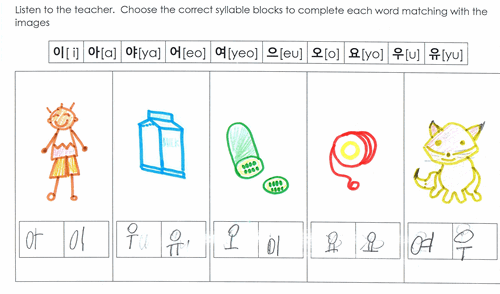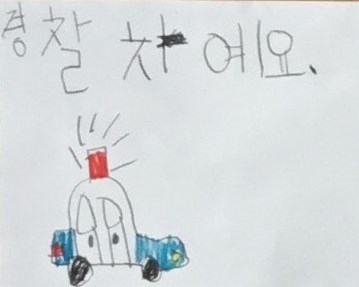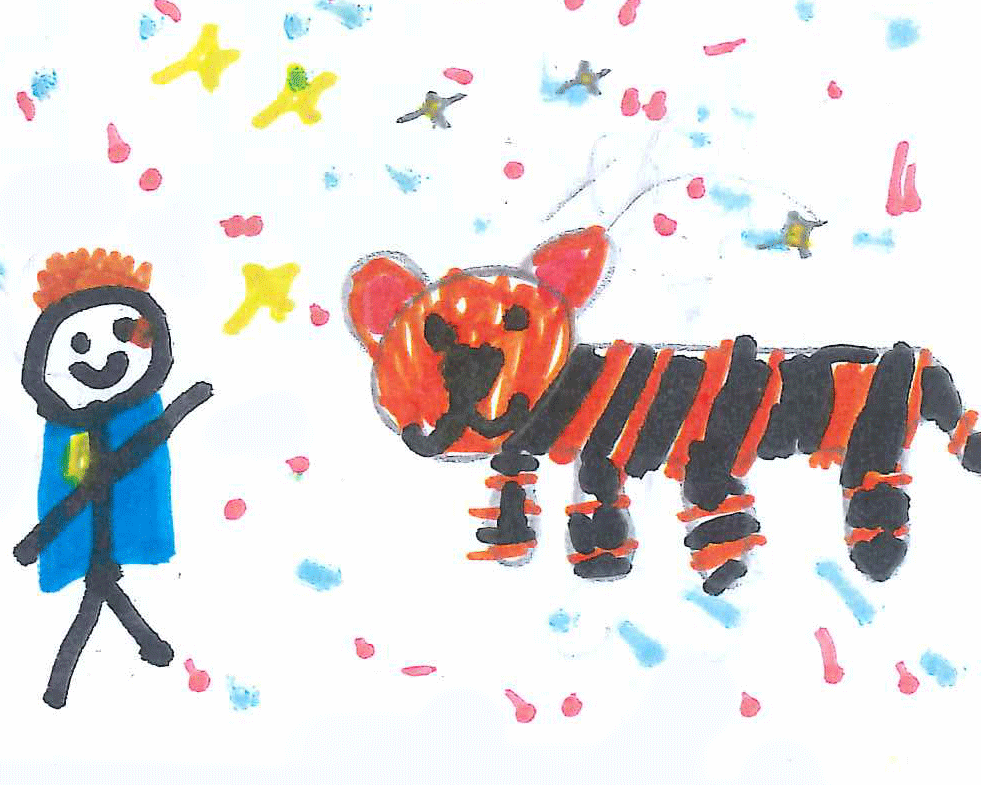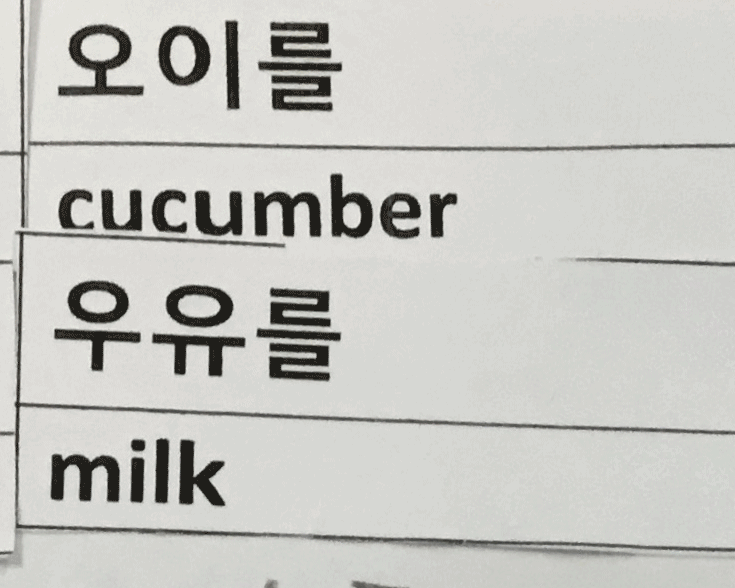Languages: Korean - Satisfactory - Foundation to Year 2
Portfolio summary
This portfolio of student work shows that the student interacts with peers and teachers through play- and action-related talk, exchanging greetings and introducing themselves with gestures (WS1,WS2, WS4, WS5). The student responds to question cues by naming objects with single words or using short, simple sentences as set phrases (WS1, WS2, WS5). The student responds to teacher instructions (WS1) such as by imitating the teacher’s actions or speech, and to the teacher’s simple closed-ended questions by giving short answers (WS4, WS5). The student makes simple requests and thanks others or the teacher with appropriate gestures (WS1). The student mimics and approximates Korean pronunciation of simple words (WS1, WS4, WS5), and locates and reads specific words such as names of people or objects provided in familiar types of short texts (WS1, WS2, WS5, WS7). The student presents simple information relating to themselves, their friends or everyday objects, using simple words and set phrases (WS2, WS5, WS6). The student creates and performs their own simple texts using modelled examples and formulaic language (WS5, WS6). The student uses vocabulary related to their class and home environments (WS2, WS5, WS6). The student uses the personal pronoun 저, basic particles –은/는, –이/가 and –을/를 as part of formulaic chunks ending with –어/아요 or –이에요/예요 (WS3, WS5, WS6). The student matches simple Korean and English texts written in Hangeul and English and identifies familiar objects in both languages (WS2, WS3). The student explains aspects of Korean language and culture in everyday language use, such as ways of greeting and thanking (WS4), identifying differences or similarities to their own language/s and culture/s, and discusses the experience of learning and using the Korean language.
The student discriminates Korean sounds and script from those of English and other languages and identifies the syllable block as the unit of writing (WS6) and associates individual syllable blocks with their pronunciations (WS1, WS2, WS3, WS4, WS7). The student identifies their own names written in Korean using syllable blocks and pronounces them using Korean sounds. The student identifies –요 at the end of a sentence as indicating some polite meaning and identifies 저 as referring to self and 저는 as an equivalent to ‘I’ in a sentence (WS3, WS6). The student chooses between –이에요 and –예요 when they construct a sentence using a copula (WS6). The student identifies Korean language as the language of Korea and as one of the many languages used in Australia and in the world. The student identifies some loan words from other languages and Korean words used in Australia (WS5) and other countries. The student identifies differences and similarities between their own and others’ languages and cultures (WS6).






